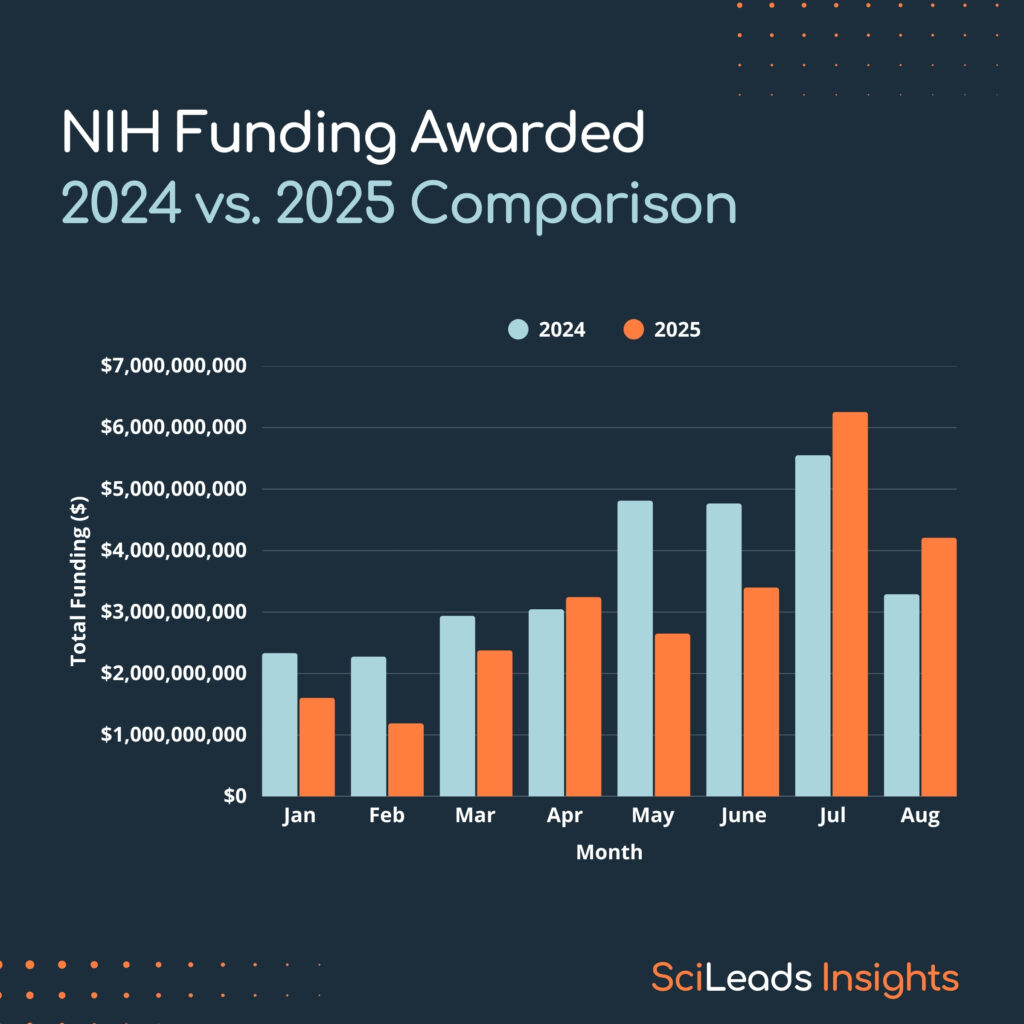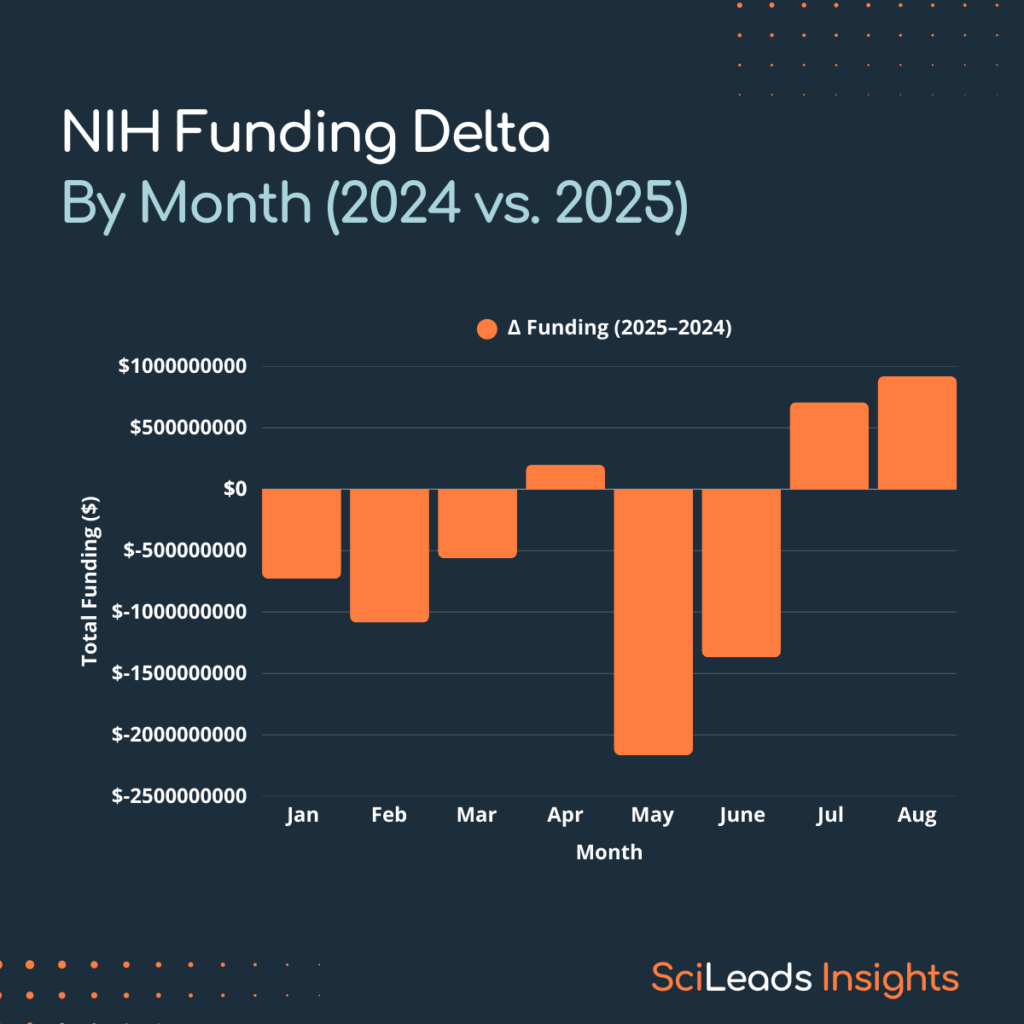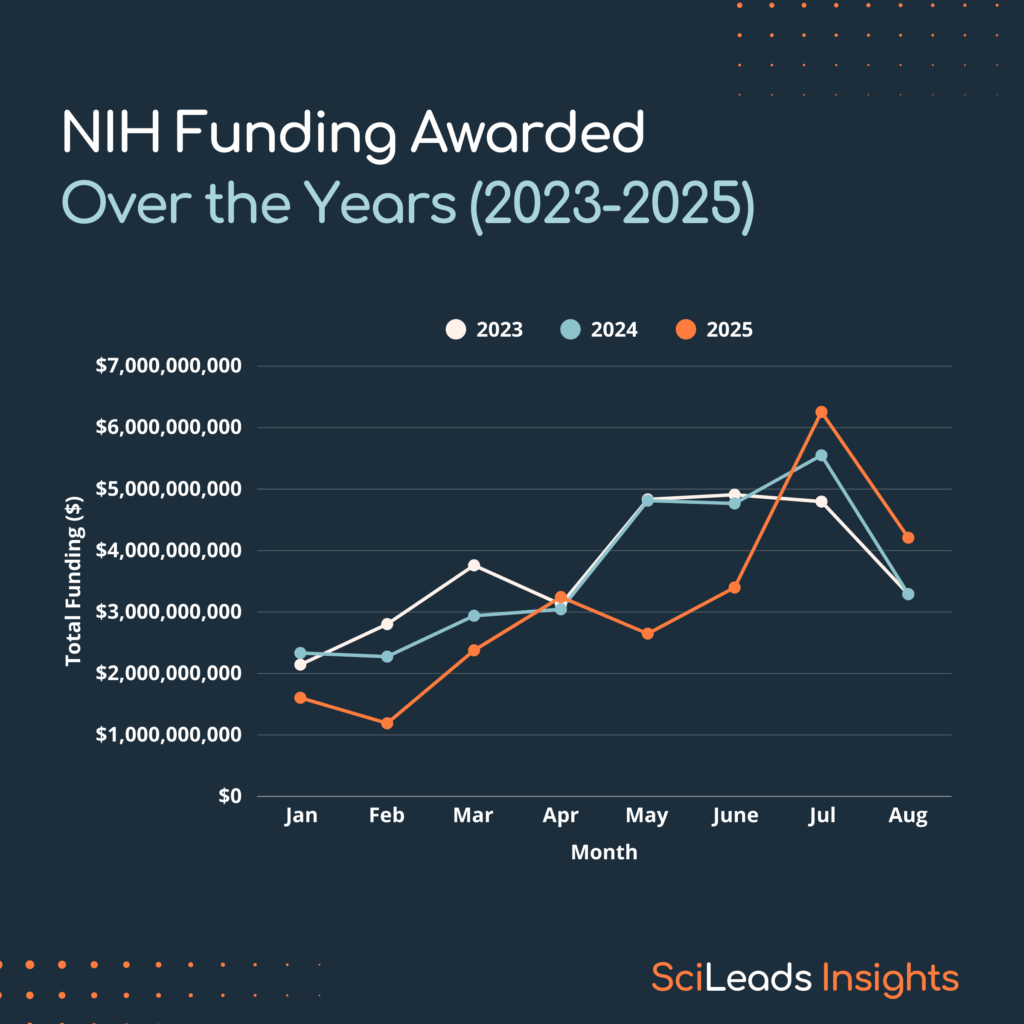A lot of people have been asking us about the latest NIH funding data, so we figured we’d put together some graphs to show the trends and how it’s actually shaping up. The short answer is the last few months have been on the up, recouping some of the losses from earlier in the year. But here are a few graphs to show more detail:
Figure 1: NIH Funding by month 2024 versus 2025

2025 lagged well behind 2024 in the first half of the year, with funding down 28% by June. However, a record $6.26B in July and $4.2B in August helped narrow the year-to-date gap to just 14%, indicating that 2025 is recovering after a slow start.
Figure 2: NIH Funding by difference each month between 2024 and 2025

Although funding has been down most months, we are recouping losses in recent months, perhaps due to a backlog of awards that are now getting awarded.
Figure 3: NIH Funding by difference each month between 2023 and 2025

For anyone wondering about the year before, it’s pretty much tracked the same as 2024.
What can you do about it?
Those of you who had funding alerts set have already taken advantage of this surge in awards. Make sure your SciLeads filters are set to alert you of awarded grants so you can be the first to take advantage of the increase in recent grants, and check out our new Chrome extension, which brings these grant insights directly into your CRM.
We’ll be back with a September update next month 🙂

